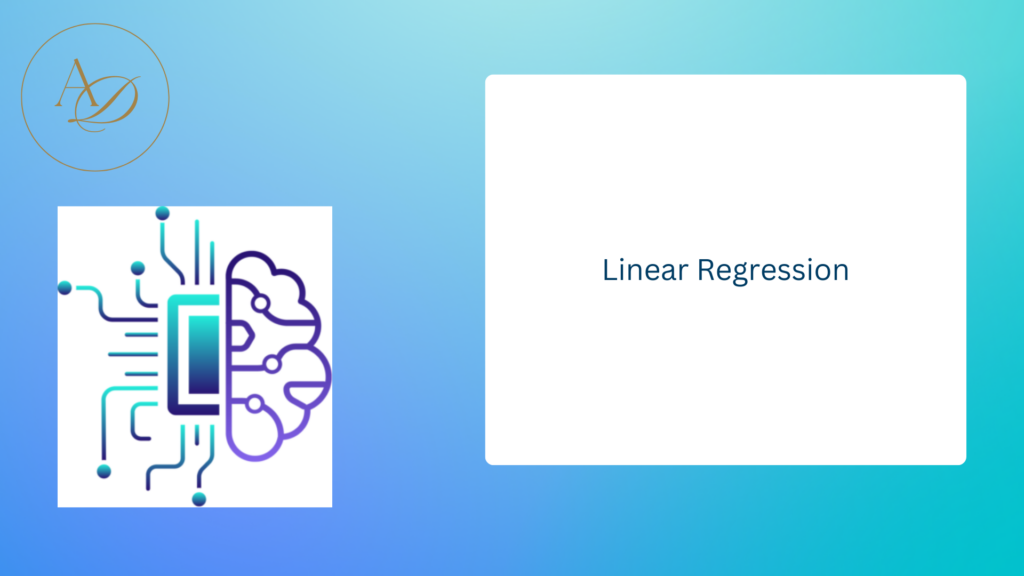Linear regression stands tall as one of the simplest yet most powerful tools for predictive modeling. Whether you’re an aspiring data scientist, a business analyst, or a curious mind eager to understand the fundamentals of statistical modeling, mastering linear regression is a crucial step.
Understanding Linear Regression
At its core, linear regression is a statistical method used to model the relationship between a dependent variable (often denoted as [latex] y [/latex]) and one or more independent variables (denoted as [latex] x_1, x_2, ldots, x_n [/latex]). The fundamental assumption in linear regression is that this relationship is linear in nature, meaning that changes in the independent variables are associated with a linear change in the dependent variable.
Simple Linear Regression
Simple linear regression is a statistical method used to model the relationship between two quantitative variables: a dependent variable ( [latex] y [/latex]) and an independent variable ([latex] X [/latex]). The relationship is assumed to be linear, meaning that changes in the independent variable are associated with a proportional change in the dependent variable.
The general form of a simple linear regression model is represented by the equation of a straight line:
[latex]y = \beta_0 + \beta_1 x + \epsilon[/latex]
Here, [latex]beta_0[/latex] represents the intercept of the line (the value of [latex]y[/latex] when [latex]x=0[/latex]), [latex]beta_1[/latex] represents the slope (the rate of change in [latex]y[/latex] for a unit change in [latex]x[/latex]), and [latex]epsilon[/latex] represents the error term, which captures the discrepancy between the observed and predicted values of [latex]y[/latex].
Assumptions of Simple Linear Regression
Before diving into modeling, it’s crucial to understand the assumptions underlying simple linear regression:
- Linearity: The relationship between [latex]x[/latex] and [latex]y[/latex] is linear.
- Independence of Errors: The errors (residuals) should be independent of each other.
- Constant Variance (Homoscedasticity): The variance of the errors should remain constant across all levels of [latex]x [/latex].
- Normality of Errors: The errors should be normally distributed.
Fitting the Model
The goal of simple linear regression is to estimate the coefficients [latex]beta_0[/latex] and [latex]beta_1[/latex] that best fit the data. This is typically done using the method of least squares, which minimizes the sum of the squared differences between the observed and predicted values of [latex]y[/latex].
Interpreting the Coefficients
Once the model is fitted, it’s essential to interpret the coefficients:
- [latex] \beta_0 [/latex]: The intercept represents the value of [latex] y [/latex] when [latex] x=0 [/latex].
- [latex] \beta_1 [/latex]: The slope represents the change in [latex] y [/latex] for a one-unit change in [latex] x [/latex].
Multiple Linear Regression
Multiple linear regression is an extension of simple linear regression, where we consider more than one independent variable in modeling the relationship with a dependent variable. The general form of a multiple linear regression model can be expressed as:
[latex] y = \beta_0 + \beta_1 x_1 + \beta_2 x_2 + \ldots + \beta_p x_p + \epsilon [/latex]
Here, [latex]y[/latex] represents the dependent variable, [latex]x1[/latex], [latex]x2[/latex],……, [latex]xp[/latex] represent the independent variables, [latex]\beta_0[/latex] represents the intercept, [latex]\beta_1[/latex], [latex]\beta_2[/latex],… [latex]\beta_p[/latex] represent the coefficients associated with each independent variable, and [latex]\epsilon[/latex] represents the error term.
Assumptions of Multiple Linear Regression
Before delving into modeling, it’s essential to understand and validate the assumptions underlying multiple linear regression:
- Linearity: The relationship between the dependent variable and each independent variable is linear.
- Independence of Errors: The errors (residuals) are independent of each other.
- Constant Variance (Homoscedasticity): The variance of the errors remains constant across all levels of the independent variables.
- Normality of Errors: The errors follow a normal distribution.
Fitting the Model
The primary objective in multiple linear regression is to estimate the coefficients ([latex]\beta_0[/latex]) that best fit the data. This is typically achieved using the method of least squares, which minimizes the sum of the squared differences between the observed and predicted values of the dependent variable.
Interpreting the Coefficients
Once the model is fitted, interpreting the coefficients becomes crucial:
- [latex]\beta_0[/latex]: The intercept represents the expected value of the dependent variable when all independent variables are zero.
- β1,β2,…,βp: The coefficients represent the change in the dependent variable for a one-unit change in the corresponding independent variable, holding all other variables constant.
Model Evaluation
Several metrics can be used to evaluate the performance of a linear regression model, including:
- Residual Analysis: Checking for patterns or trends in the residuals.
- Coefficient of Determination R2: Measures the proportion of variance in the dependent variable that is explained by the independent variable.
- Adjusted R2: A modified version of R2 that penalizes the inclusion of unnecessary variables.
- Significance Tests: Assessing whether the coefficients are significantly different from zero.
In conclusion, linear regression serves as a foundational tool in the arsenal of data scientists and analysts. By understanding its principles, assumptions, and applications, you can harness its predictive power to extract valuable insights from data. As we journey deeper into the realms of data science and machine learning, let’s remember the simplicity and elegance of linear regression, a timeless technique that continues to shape the way we analyze and interpret data.

